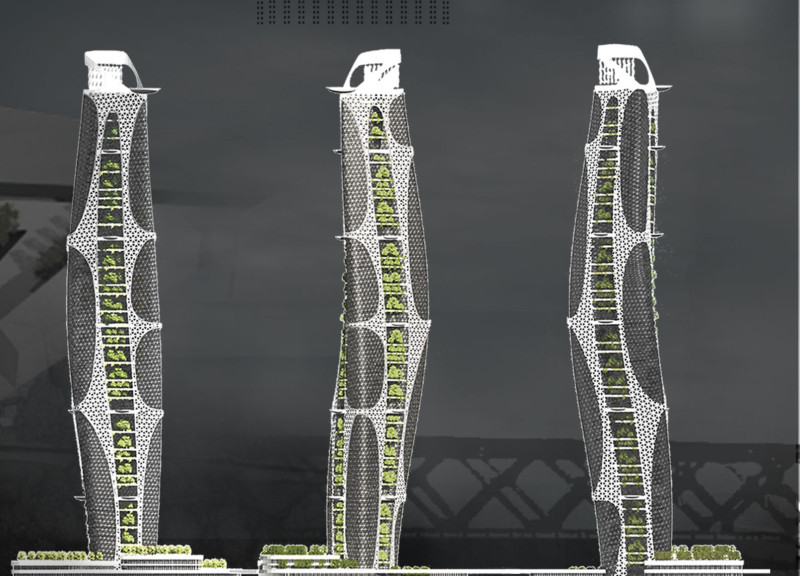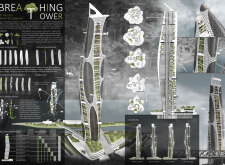5 key facts about this project
The Breathe-ing Tower is a contemporary structure designed to improve air quality in urban environments. Located in a busy city setting, it accommodates various functions such as living spaces, commercial areas, and leisure facilities. The design concept draws inspiration from nature, aiming to create a healthier indoor environment by integrating plant life into its architectural framework.
Design Concept
The Breathe-ing Tower integrates the benefits of plants to achieve its architectural mission. The vertical form mimics the growth patterns found in nature, creating a visual link to the surrounding environment. By incorporating a vertical forest into its design, the tower enhances its aesthetic appeal while promoting sustainability and environmental health.
Atrium and Ventilation
A significant feature of the Breathe-ing Tower is the atrium, which acts as a natural ventilation system. Inside this space, various plants help cool and moisturize the air, contributing to better indoor air quality. The presence of greenery in the atrium not only adds beauty but also makes the indoor space more comfortable and inviting for those who use it.
Air-Cleaning Facade
The tower includes a specialized facade made from titanium dioxide, which employs photocatalysis to change nitrogen oxides into less harmful substances. This innovative feature shows a commitment to reducing pollution and improving urban health. It serves as an architectural solution that addresses environmental concerns while helping the overall ecological footprint of the building.
Multipurpose Building Programme
The building’s design features a diverse range of functions, including spaces for food and beverage outlets, apartments, offices, and retail areas. This variety allows for interactions among residents, visitors, and workers, creating a lively community atmosphere within the tower. The layout optimizes land use and offers an integrated experience for everyone involved.
The Breathe-ing Tower's design emphasizes the careful arrangement of greenery throughout its structure. This creates a vertical landscape that enhances the relationship between the building and nature, addressing the need for improved air quality in urban settings while fostering a healthier living environment.



















































